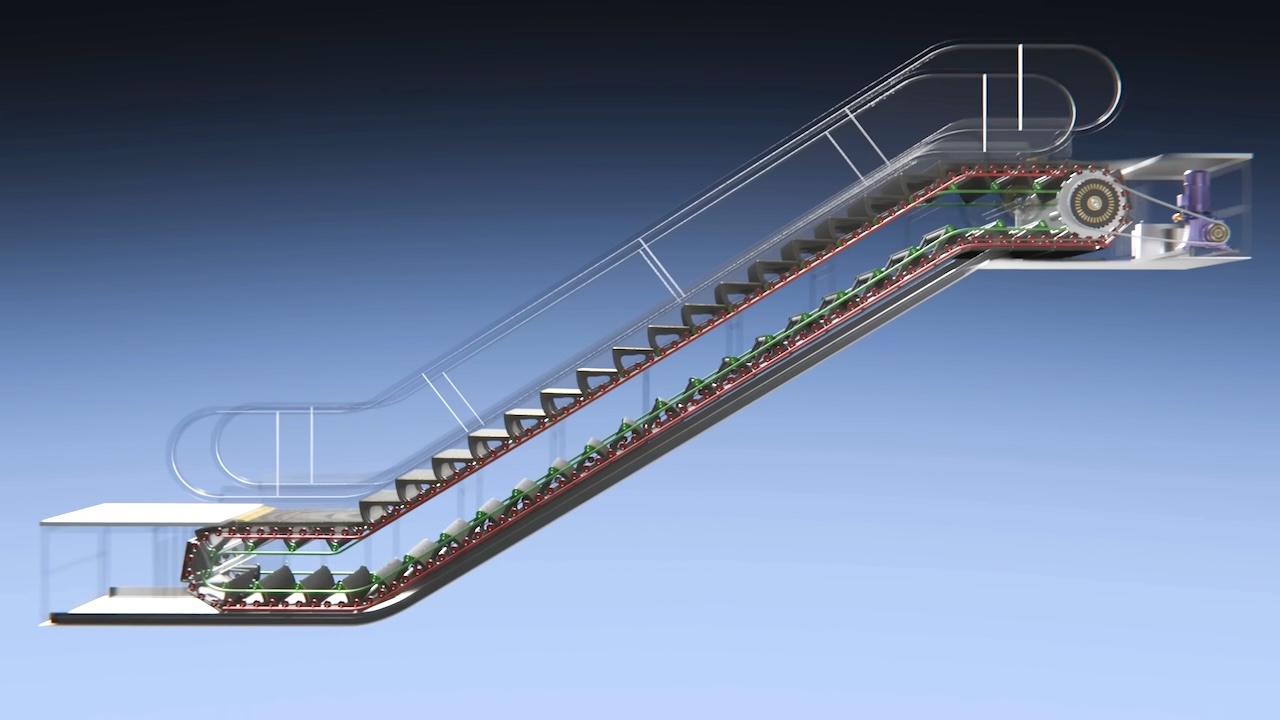Derek Muller and Latif Nasser of Veritasium explained the fascinating physics behind the design of escalators, noting how subtle safety features had to evolve over time. They also look at how the 2018 escalator accident in Rome happened and why.
The surprising science of escalators.
These features include the rolling design of the escalator, the grooves on each step that meet a comb plate that make easy entrance/exit while removing the threat of items getting caught, the skirt brush to keep items and a handrail that moves faster than the steps to anticipate wear lag.
In a modern escalator, the motor has a separate connection to turn a friction wheel that drives the handrail. The only problem is that friction wears things down. …so the handrail begins to move more slowly. …So to compensate for this, a new handrail is calibrated to move around 2% faster than the steps.
Modern escalators also have a multi-faceted failsafe system that keeps the escalator in control, however when shortcuts or negligence occur, then it can all go wrong as it did in Rome.
The truth is when they’re properly maintained, the safety margins on escalators are enormous.Each system is engineered to handle forces far beyond what they’ll ever see in service. …But there is a point where if you keep adding weight, then eventually the force becomes so strong that the motor can no longer resist it. And if left unchecked, it would start accelerating uncontrollably. The stairs would go plummeting down, which is exactly what happened in Rome.
The 2018 Escalator Accident in Rome
The Last Wooden Escalator in New York City
Related Posts

